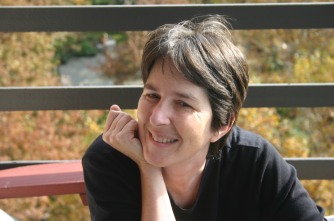
An odd letter by one of Mendocino County’s career outlaws, which appeared in a recent issue of the Anderson Valley Advertiser (October 28, 2015), underscores what can happen when a community believes justice has not been served. The writer, a convicted felon named Walter Miller, linked his own legal appeal to claims of a bizarre conspiracy in the office of the county District Attorney. In meandering prose, he wraps what he calls “the cold-blooded murder of the late Susan Keegan” into a diatribe about the power of money, the prestige of being a physician, and the reality of bias.
This is, in part, what Miller wrote:
“I always thought that justice was blind. Obviously not with Mr. Eyster as the district attorney…. I wonder what Dr. Keegan is doing for Mr. Eyster? Or vice versa? Hmmm?”
To be clear: The Justice4Susan Committee does not harbor the slightest suspicion that DA David Eyster and Dr. Peter Keegan have any kind of cooperative relationship whatsoever. They obviously do not. It has long been apparent that the District Attorney wants to prosecute this unsolved homicide and that his office is frustrated and embarrassed by its failure to take action.
Why, then, quote such nonsense? Because the speculation in Miller’s letter demonstrates how conspiratorial thinking can seep into civil society, and faith in its institutions can seep out.
Five years ago today, Susan Keegan died in her home after spending the day visiting friends, attending an art class, and planning her post-divorce future. As is well-known to the many readers of this blog, her husband had been filled with rage about her legal rights to half the family assets; gone “ballistic” in a divorce mediator’s office the day before she died; and hired a defense attorney one day afterwards. Susan’s death was declared a homicide in 2012 and Dr. Keegan remains the only suspect in the case.
In Mendocino County and beyond, hundreds of people who knew Susan, and thousands who did not, still don’t understand why charges have not been filed. The DA has never made a public statement about the case, except to say, year in and year out, that it remains under investigation. When a case is open, the DA is allowed to keep the evidence out of sight – no autopsy report, no photographs, no investigatory notes, no interview records, no toxicology report can be released. The search warrants in the case – at least two visits were made to the Keegan home in the years after Susan’s death – are sealed. Freedom of Information Act requests will be denied.
That level of opaqueness gives rise to conspiracy theorists like Mr. Miller. What evidence led law enforcement authorities to officially call Susan’s death a homicide, and why have they failed to act on what they know? Why won’t the DA’s office convene a grand jury to consider the strength of the evidence, and allow the legal system to work as intended? Why won’t the DA talk to the community he is elected to protect, and explain the inaction of the past five years?
Without answers to these most basic questions, rumors fill the gap.
A healthy civil society needs institutions that work. A credible system of law enforcement functions without fear or favor to protect the innocent, give suspects their day in court, and punish guilty parties. Susan, offbeat though she was, believed in those principles. Five years on, the pain of her loss has not diminished for her family and friends. But what it has done to the community at large may be even more damaging: the passage of so much time without a prosecution has created a platform for cynics.